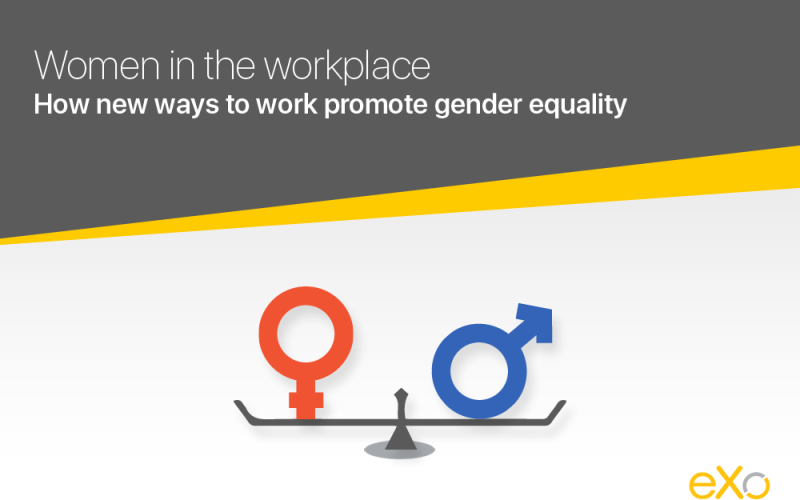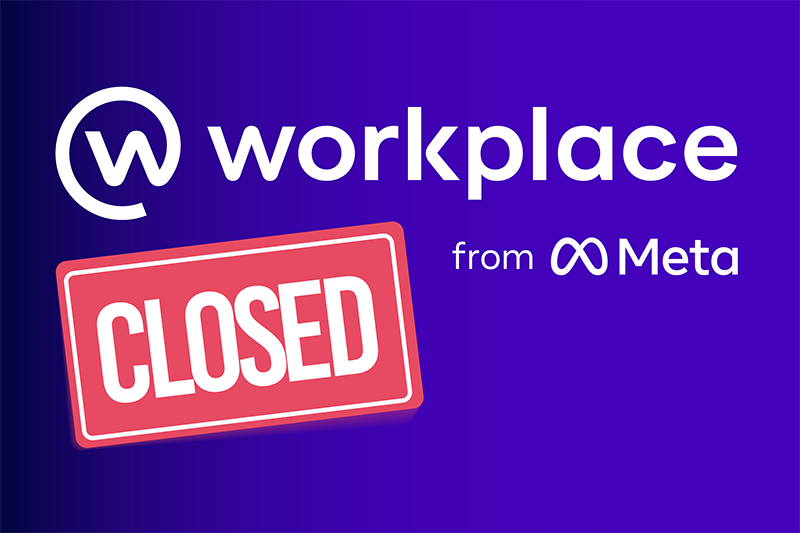- Veronika Mazour
- March 30, 2017
Women in the workplace – new ways to work promote gender equality?
As a mother and a working woman specialising in digital workplace solutions, I’ve wanted to write about women in the workplace for a while.
Sadly, in recent months, women rights have been quietly but consistently losing ground around the world, including in developed countries. In such a context, it seems almost disrespectful to fight for women’s advancement and equal opportunity in the workplace.

Content
When millions of women are denied basic rights and liberties, are victims of violence and struggle to make ends meet, how dare we, the educated and privileged, fight for luxuries such as equal pay or work/family balance?
On the other hand, if opportunities aren’t equal even for the educated and the privileged, how can we ever hope to build a society in which everybody has their rightful place?
I recently stumbled upon a famous article that I managed to miss at the time: Why women still can’t have it all by Anne-Marie Slaughter.
It resonated with me on many levels. I took a couple of minutes to think about my own experience in the workplace, in big corporations and as an entrepreneur, and what it has meant for my personal and family life.

FREE WHITE PAPER
Types of Digital workplace solutions
The modern workplace has evolved significantly in recent years, with advancements in technology, the growing number of tools …
1. Work as an employee
In my first big corporation job, my manager had a habit of waiting a whole day before giving me feedback on an assignment, which was always due first thing the following morning.
As a result, I had to work part of the night, then surf the internet and the company learning centre throughout the day – until I learned to say with a smile: ‘You will have it tomorrow after lunch.’ The job provided free food after 7:00 p.m. and cab fare after 10:00 p.m. so most people routinely stayed late and discussed work things.
If you weren’t there, you missed all of this.
In my second big corporation job, the day really started around 9:45 a.m. with a long social coffee break – so if you weren’t there before 10:00 a.m. it was no big deal. The lunch break was sacred and was also used to work/socialise. However, if you left the office before 8:30 p.m. you were considered a slouch.
A friend of mine (a woman with two kids) was at the office at 8:15 a.m. every morning, routinely worked through lunch and left around 6:45 p.m.
Even though she was probably working more hours on average than most of her colleagues (not to mention her productivity), she didn’t feel comfortable leaving ‘early’ and felt the peer pressure.
My third employer was proud of his equal opportunity policies, which were widely advertised. (I already had one kid at the time, so I did listen.)
Women were allowed to leave early and finish their work from home in the evening. In practice, this meant that they were excluded from all important meetings and decisions because these were systematically held at the coffee machine in the evening.
Women were invited to hold the same positions as men for the same wages and they could work part time in those positions. In practice, this meant they could work a day from their home office, but it would be a non-paid day.
Transform your employee experience
with eXo Platform
with eXo Platform
2. Work as an entrepreneur
Anne-Marie Slaughter, whom I cited above, quit her high-profile government job for a more flexible job in academia so that she could spend more time with her family.
I’m lucky to have made a similar switch towards a more flexible job. I became an ‘entrepreneur’. At the time it was a work choice, but it became a life choice.
While working for yourself has no office hours and never really stops, it gives you the advantage of a flexible schedule.
For my part, I do rely on nannies and school, but I also get luxuries such as having dinner with my family every evening when I’m not travelling and providing my kids with a sense of presence and availability that they wouldn’t otherwise experience.
Moreover and more importantly, my new job naturally allowed remote work. Many of my colleagues live in different cities and countries, so we collaborate via our platform and rely on digital workplace tools to get things done and document them.
As a result, exchanges are much shorter and focused and work is better organised. Of course, real-life human interactions are also important, so the ideal is some kind of a mix.
Thinking about it some more, I came to the conclusion that the way I am allowed to work now has nothing to do with my job title. It is a different way of working. A way that takes full advantage of new technologies. A way that is adapted to the new work realities and based on very different principles of evaluation.
I believe that this different way of working can be adapted to any organisation and will result in gains in productivity and creativity as well as happier employers (men and women alike).
3. Results rather than means
The one fundamental principle that separates traditional workplaces from the new workplace lies in the way we value and measure a person’s work. Traditional workplaces value physical presence – an employee is working when they are there, under the watchful eye of their superiors.
Fundamentally, this philosophy goes back to the factory days when physical presence actually meant work and it wasn’t possible to work from outside the factory.
Today, in developed countries and economies, a big percentage of all workers don’t work physically. They work with information, which, thanks to new technology, can be accessed anywhere.
A knowledge worker can work when they aren’t in the office, so why do we still value means (presence) above results (actual success in the actual job)? It just doesn’t make sense.
When you think about it, even in rigid corporate structures there are ‘stars’ who don’t behave like everybody else. They are allowed unthinkable liberties regarding work schedules, absence and so on. How do they get away with it? Well their results are so obviously good that nobody dares to question their behaviour.
It’s a paradox that managers want stellar results while stifling their employees with rigid rules and putting them into boxes.
So why do traditional work models dominate the high-end work market everywhere, with only a few notable exceptions (Silicon Valley)?
Discover the new generation
company intranet
company intranet
4. Why change anything while ‘it works’?
Taiichi Ohno, considered the father of the Toyota Production System, said: ‘Progress cannot be generated when we are satisfied with existing situations.’
I believe this applies to the way most workplaces operate today, essentially following the same logic as they did 50 years ago. Perhaps a crisis is needed to help transform and improve our way of working. If so, we might just get what we’re looking for to cope with the upcoming talent shortage.
5. Rigid job market legislation
In some countries, particularly in Europe, it is difficult, even impossible, to easily fire a worker, whatever their performance. In fact, the cost of firing can be so great that many companies keep employees who do nothing but turn up to the office. They see it as a lesser evil than jumping through the hoops of a painful and expensive separation process.
In that context, managers are naturally afraid to risk what may appear to be an authorised unlimited paid leave of absence. However, what every employer wants is motivated dynamic employees doing their best, not zombies sleeping at their desktops.
Giving employees the freedom to organise their schedules is a token of trust that can go a long way towards achieving engagement.
6. Technical bias
Most managers are also convinced that employees just can’t work outside the office as efficiently as they can inside, not only because of all the distractions but because of technical problems.
However, technology has made colossal progress in recent years. Digital workplace tools today give an employee access to all of a company’s knowledge, tools and people, from any location or device.
Thus, an employee can work on a document, ask a colleague for advice, hold a meeting and be aware of what is going on without being physically present in the office.
Changes are hard, but changes are what life is made of – a prerequisite to any progress. If we really do want a workplace with women in it (and we do, especially with the current skills shortage), the workplace must become flexible and digital.
While particularly necessary for women looking for a work/family balance, this new style of workplace would also suit the millennials.
When I was younger, I read a simple truth that was somehow new to me. (I would gladly give credit for it if I could remember.) At any given point in time, you can truly invest yourself and succeed in only three of the following five things: relationship, social life, work, family, personal development.
Like everything that’s important, all of these take time, investment and nurturing – time we simply don’t have. I hope that flexible schedules, remote working and a digital workplace will be a way to tip the balance towards a solid three, if not four, out of five.
A Digital Workplace tailored to your needs
Discover How To Boost your employee
engagement and performance
engagement and performance
5/5 - (1 vote)
I am the Chief Executive Officer of eXo Platform (the open source digital workplace platform), a company that I co-founded while in college and that I came back to after several years in the banking and consulting industry. I blog about modern work, about open-source and sovereignty issues. Occasionally, I also blog about my personal areas of interest, such as personal development, work–life balance, sustainability and gender equality.
Related posts
- All
- eXo
- Digital workplace
- Employee engagement
- Open source
- Future of work
- Internal communication
- Collaboration
- News
- intranet
- workplace
- Knowledge management
- Employee experience
- Employee productivity
- onboarding
- Employee recognition
- Change management
- Cartoon
- Digital transformation
- Infographic
- Remote work
- Industry trends
- Product News
- Thought leadership
- Tips & Tricks
- Tutorial
- Uncategorized
Leave a Reply
( Your e-mail address will not be published)
Connexion
0 Comments
Commentaires en ligne
Afficher tous les commentaires


